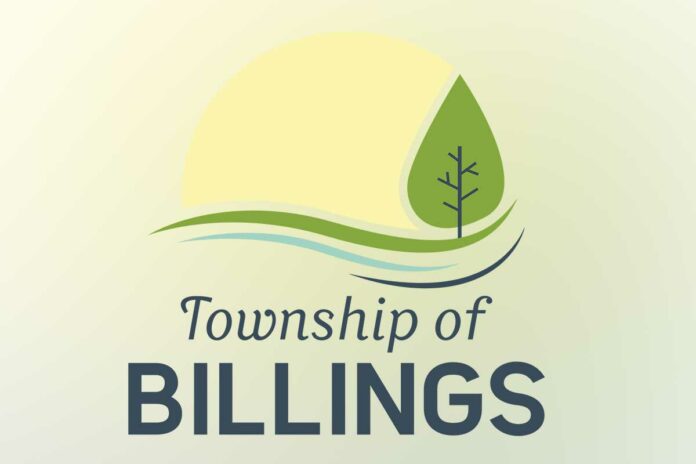EDITOR’S NOTE: This year marks 50 editions of the culturally important Little NHL (Native Hockey League) tournament and, over the weeks leading up to the Markham event, Expositor reporter Gina Gasongi Simon will trace the evolution of the tournament from its origins as a two-day local event in 1971 at the old Little Current Arena to the massive undertaking it is today with nearly 250 teams participating from all corners of the province. This week’s installment, the fourth, examines the impact of the tournament on female hockey players.
by Gina Gasongi Simon
As we know, hockey in Canada developed historically as a male preserve. The struggle for access to minor hockey for girls has been kind of masked in masculinity, whereby it was a field of dreams for boys to try and emulate their favourite stars. Girls had to find another place to shine.
Many girls like Ruby Trudeau Simon and Jeannette Bondy, both from Wiikwemkoong, have challenged the notion that girls can’t play boys’ hockey. In the beginning they played more recreational hockey starting with Tykes right up to Midgets alongside their male linemates.
Ruby, like a few other girls before her, has been inspired and encouraged by girls like the new inductee to the LNHL Hall of Fame, former teammate Jeannette Bondy. Both girls played hockey with the boys from the moment they could skate.
I caught up to Ruby Trudeau Simon driving back from her daughter Delaney’s recent playoff game against Gore Bay. Ruby a former player in the LNHL reported, “It was an exciting game, our team was down 2-0 after the second period. But our girls managed to grind out 2 goals and keep the momentum going and we won 5-3,” says the proud mother and coach.
When asked about her opinion of girls playing hockey, she shared her passion for the game. “I definitely welcomed the opportunity to play with the boys. It pushed me to another level of competitiveness and grit to establish my spot on the team. I didn’t have any other option, I wanted to play and there was only boys’ leagues.”

Before the girls reached puberty between nine and 13 it’s pretty well even playing ground. It’s after this development in age that girls like Ruby and Jeannette had to turn up their game and prove female athletes, when given a real opportunity to develop their potential, proved they could perform at a level even surpassing most males.
Ruby faced a point of reality and although her performance, range of speed and coordination were challenged by the face of physicality and strength, “I did after Midgets have to step back from the game and luckily Jeannette had made a name for herself in Sudbury, playing at a triple A level with the Sudbury Flyers.” Ruby too tried out and made the team. She admits at times facing racism from some coaches and fans, but for the most part enjoyed her short-term career at the competitive level and had to turn down a hockey scholarship from the University of Pennsylvania because motherhood was calling.
The issue to give the gift of life then becomes, from some perspectives, whether girls should be able to have the same opportunities to develop their potential that boys do, including physically demanding training, expert coaching and challenging competition.
According to Ruby who now coaches her daughter’s team and a mixed team of boys and girls, “The choice should be left to the individual and her parents,” she continues to explain, “I had the support of my mother, and played later in life when they finally did offer organized women’s hockey in our community.”
Marian Jocko who also doubles as a coach and mother says, “I am grateful to men like Chico Ralph, the current LNHL President. “He has been instrumental in promoting the opportunity for Indigenous girls to show their passion and love for the sport by starting the girls’ divisions.

Ms. Jocko. a Wiikwemkoong band member, is a past president of the Little NHL and is currently a board member of Hockey Canada.
Long time LNHL organizer and promoter Debbie Debassige from M’Chigeeng acknowledges current President Ralph, “Our numbers have definitely grown because of the efforts of Chico and girl’s hockey will continue to rise with that kind of support and attitude. We witness level and skill within the ranks of the Professional Women’s Hockey League and it is now something for our young girls to aspire too,” she explains.
This year’s theme is the sacredness of water.
To the Anishnaabe, water (nibi) is a sacred spirit, considered to be a living and moving being. It is part of the Anishnaabe kwe (women) tradition that women speak for the water. As the lifegivers of the entire nation, they hold within their being—the sacred waters. The women led by Nokomis Josephine Mandamin (baa) have been committed to action and responsibility for the revitalization and healing properties of the water.
Marian Jocko credits her daughters’, Waskoness (Washy) Williams and Thuraya Jocko success in school and attitudes towards life to the game of hockey and their experience playing in the LNHL. “I’ve watched my daughters mature while playing the game, and sometimes think to myself that the current state of opportunity and treatment of Indigenous women and girls in this country, Canada, desperately needs a real paradigm shift.”

Marian Jocko’s day job as the Assistant Deputy for the Minister of Justice provides her with a unique inside perspective on some hard issues facing our justice system when it comes to MMIW murdered and missing women and girls.
“When I look at the current criminal system and its intersection within society, we really have to take a second look at the need for change and treatment of Indigenous women and girls. National reports show statistically Indigenous women and girls are twelve times more likely to be missing or murdered. What does that say for opportunities afforded to our young Indigenous women?” she exclaimed.
For many mothers like Ruby and Marian who double as coaches and mentors, “the time is pivotal and we must respect and honour our young girls trying to do something meaningful and productive in their lives, whether that is aspiring to the big leagues or just staying in school,” says Marian. “I view hockey as having that power to change the paradigm shift for our girls. It provides them opportunity, unity and a voice while playing the game.”
When these girls reach a certain age, they have to hang up their LNHL skates because the Midget division, U17 is the last tier they can play in the league. “It’s very emotional,” explains Ruby. “I remember when our girls’ team played their last game, we all stood on each side and formed a bridge of sticks for them to skate under as they left the ice after their final game. I cried and so did the other mothers and girls. It means so much to them, identity, pride and that sense of belonging. You can’t match that feeling of being a part of something,” she concluded.





